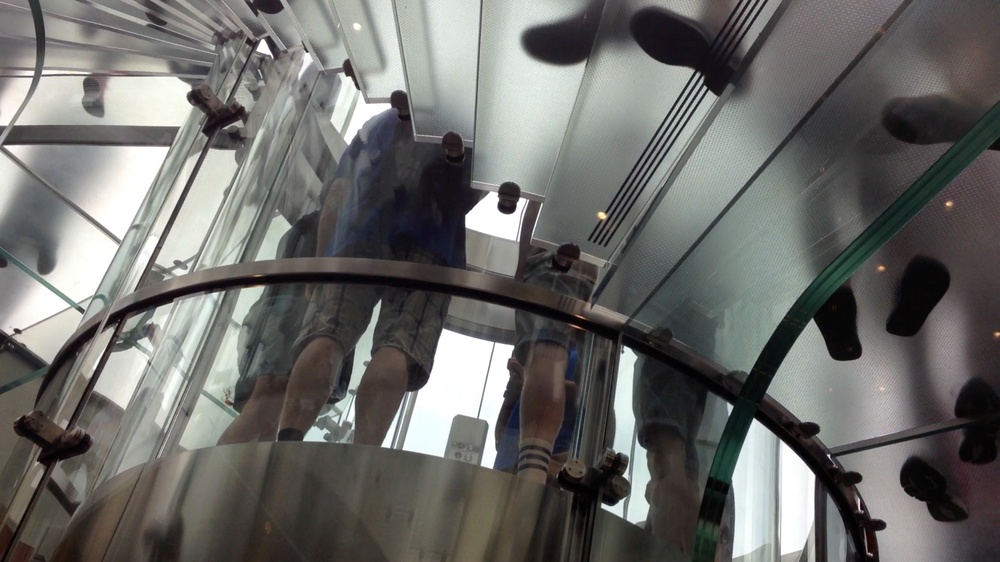- Learning to perceive the rhythms of the everyday life
The video recordings available on this page are a part of an ongoing process of esthetic, intellectual, as well as playful and experimental inquiry. They express my interest for the multiplicity and heterogeneity of lived or observed rhythms. Indeed, video is a privileged medium for the exploration of the rhythms of the everyday life. Using a very discrete device (Vado HD, iPhone) allows me to improvise recordings – often freehand – according to my trips, without neither interrupting nor influencing significantly the dynamics observed.
My approach is inspired by several contributions : the work of the anthropologist Edward T. Hall about the relationships between space, rhythms and interindividual communication ; the thought of Henri Lefebvre, especially around his rhythmanalytical project ; or the recent contribution of Pascal Michon around the rhythms inherent to any process of individuation. I am also influenced by the exploratory approach conducted by my wife, Natasha, around the relationships between space, movement and dance, following a pedagogical and environmental perspective.
My video recordings bring me today to question the way one learns, or unlearns, to perceive the rhythms of ones’ own natural, human and artificial environment, as well as the dynamics through which they determine and translate one’s own way of being and evolving. By connecting these recordings with my theoretical research, I aim to apprehend the rhuthmos - what is moving and fluid - through an attempt, both esthetical and playful, to categorize rhythms (human, natural, artificial, ritual, individual, collective, etc.)
From a formal point of view, wishing to preserve the anonymity of the subjects appearing on the videos, I chose to focus on specific parts of the body or to adopt angles that make difficult to identify individuals. The fact that one does not perceive faces brings therefore the observer to focus on the way personalities and their surrounding environment get expressed through body movements that are a priori the most trivial ones.
- Apprendre à percevoir les rythmes du quotidien
Les enregistrements disponibles à partir de cette page s’inscrivent dans une démarche de recherche esthétique et intellectuelle, mais aussi et surtout ludique et expérimentale, à travers laquelle je m’intéresse à la multiplicité et à l’hétérogénéité des rythmes vécus ou observés. La vidéo permet en effet d’explorer de façon privilégiée les rythmes du quotidien. Le fait d’avoir recours à un appareil très discret (Vado HD, iPhone) me permet en outre d’improviser – le plus souvent à main levée – des enregistrements, au gré de mes déplacements, sans interrompre ni influencer de façon significative les dynamiques observées.
Ma démarche s’inspire de différentes contributions : les travaux de l’anthropologue Edward T. Hall sur les relations entre espace, rythmes et communication inter-individuelle ; les réflexions développées par Henri Lefebvre notamment dans son projet rythmanalytique ; ou encore les travaux récents de Pascal Michon sur les les rythmes inhérents aux processus d’individuation. Je suis également influencé par la démarche exploratoire entreprise par ma femme, Natasha, sur les rapports entre espace, mouvement et danse dans une perspective pédagogique et environnementale.
Mes enregistrements me conduisent aujourd’hui à m’interroger sur la façon dont on apprend, ou désapprend, à percevoir les rythmes de notre environnement naturel, humain et artificiel, ainsi que la façon dont ils déterminent et traduisent nos manières d’être et d’évoluer. Établissant des liens avec la recherche théorique qui m’anime, ces vidéos participent en outre à un effort d’appréhension du rhuthmos – ce qui est mouvant et fluide – à travers une tentative, que je souhaite à la fois esthétique et ludique, de catégorisation des rythmes (humains, naturels, artificiels, rituels, individuels, collectifs, etc.)
D’un point de vue formel, le souhait de préserver l’anonymat des sujets observés m’a amené à me centrer sur certaines parties du corps ou à adopter des angles de vue qui rendent difficile l’identification des individus filmés. Le fait de ne pas percevoir les visages contribue également à se concentrer sur la façon dont les personnalités et le contexte qui les environne s’exprime à travers les mouvements a priori les plus anodins du corps.

